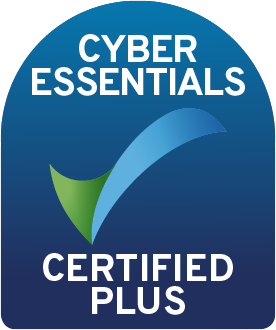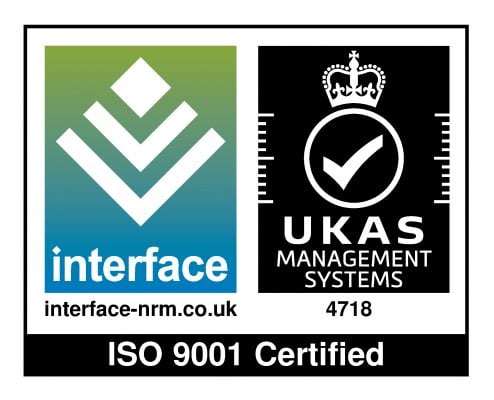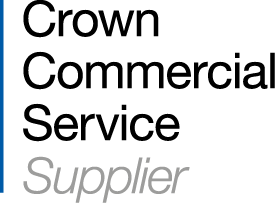We live in an age in which technology is used to enhance various aspects of our daily lives, whether at home, at work, or indeed in the classroom. With many educational facilities embracing new technologies such as virtual classroom technology, digital content tools and e-learning software, students and teachers can expect an enriched learning experience which yields better results and outcomes that will ultimately shape the future of education for the better. In this blog, we’ll explore one of the most powerful pieces of software that has already made a significant impact within the education sector, the learning management system (LMS). Join us as we discuss five key advantages of implementing a performance enhancing LMS to support student learning.
What is an LMS?
Learning management systems are digital learning platforms used to manage and measure e-learning and online training or education. LMSs unite all aspects of learning and development, including content creation and delivery, assessments, and reporting, within a single digital environment.
Want to find out more? Read our ultimate guide to LMSs here.
5 advantages of implementing a performance enhancing LMS to support student learning
Providing access to quality education
When counting down the twenty biggest challenges facing education in 2023, The Edvocate placed providing students with access to quality education as number one on the list. Factors such as lack of funding, understaffing, or overcrowded classrooms can play a key role in preventing students from receiving a quality education. The solution here is to create an even playing field for students regardless of the environment or educational facility in which learning is taking place.
An LMS boasts the tools and functionality required to deliver the same high-quality educational courses and content to each and every student who uses it. When lessons or courses are delivered in an offline environment, there is a risk of inconsistency in the quality of the learning experience - but using an LMS can prevent this.

With an LMS, educators can create or acquire quality educational content such as lessons, courses or interactive videos which can be accessed by students autonomously, anytime, and from anywhere so long as they have access to the platform. As a result, students are given the opportunity to access quality education regardless of external contributing factors. Additionally, using an LMS means students needn’t spend money purchasing educational materials and resources such as textbooks.
Using virtual classroom technology, educators can deliver lessons to multiple students across the nation or globe, granting students in even the most remote areas access to education. Additionally, students can access recordings of lessons they missed via the platform, ensuring they don’t miss out on essential information, and thus maintaining consistency across the board.
Want to find out more about autonomous student learning? Get to know: Asynchronous learning.
Increasing student engagement and interaction
Improving student performance can only be achieved when they are engaged and motivated with their education, but this isn’t always easy to accomplish. Whilst students will naturally find some subject matter more interesting than others, it can be difficult to hold the interest of students without additional support. Using an LMS, teachers can create exciting, interactive and engaging content that is varied and dynamic enough to capture the attention of learners regardless of the subject matter.
There are a number of ways to increase student engagement with an LMS; one of the easiest ways is to build a library of diverse content using format types such as videos, audio clips and infographics. Introducing interactive e-learning content can also boost engagement as this content type encourages students to play an active role in the learning process. These can include branching scenarios, image hotspots, and flashcards - all of which require some participation and steer away from passive learning.
With an LMS, educators can take advantage of gamification which incorporates game-like elements and mechanics into lessons and content. This can significantly enhance student learning as it creates a fun learning experience that emulates the type of gameplay that many students will already be engaging with outside of school or university.
Read our top tips on including gamification in your L&D strategy.
Assisting with homework and revision
Homework and revision are essential exercises carried out by every student throughout their educational career. At one time, students would revise by simply reading through educational materials or personal notes, but this isn’t suited to every student and learning style. With the help of LMS technology, homework and revision practices can be greatly enhanced.
LMS students can access an entire library of educational content at any given time (even at home), providing them with essential knowledge and information that will help with revision or completing homework assignments. When students are completing educational activities outside of their school or university, they lose the ability to interact with fellow students, teachers and educators. However, with an LMS, students can utilise features such as forums and discussion boards to enhance their learning experience further, asking questions, gaining new insights, or gaining clarity on topics and subjects they may find difficult.

Many students find it beneficial to complete practice assessments when preparing for upcoming exams, however, this can be a time-consuming process when carried out offline. With LMS assessment tools, educators can take advantage of a performance enhancing LMS to support student learning by creating a number of practice assessments and quizzes. These assessments can be completed independently and with automation technology, will be marked and graded instantly, meaning that students can gain a good understanding of their knowledge base at any time, without the need for a teacher.
Discover 5 ways to get the best out of e-learning assessments by reading our blog.
Using an LMS to broaden options for students
Forbes’ top five education trends to look out for in 2023 predicted a rise in the popularity of vocational and technical courses being delivered in schools, designed to provide students with the chance to explore alternative options to the traditional university route. For many educational facilities, however, delivering these courses requires relying on additional budget and resources that they don’t have. With an LMS, educators simply need to create or acquire vocational and technical courses and add them to an existing library of educational content. As a result, students can access these courses without the need for an educational professional or scheduled classroom session.
With this functionality students can develop new skills and acquire knowledge on topics that sit outside their core education, meaning educators are better positioned to support students who don’t wish to follow the traditional higher education route.
Discover how to close skills gaps for learners with an LMS.
Using an LMS to support teacher training
Within Ofsted’s list of priorities for schools and further education and skills providers in 2023 was an emphasis on the importance of ‘high-quality teacher training and development’ as it is ‘vital that schools can recruit, train and retain a highly skilled workforce’. When students are being taught by highly skilled teachers, they can expect a higher quality education that will result in a better overall learning experience.

To achieve a highly skilled workforce, educational facilities can expand the purpose of their LMSs beyond student education and use them for teacher training and development too. In the same way that they would create educational content, personalised learning plans and end-of-course assessments for students, they can do the same for teachers. By using a performance enhancing LMS to support student learning and teacher training, organisations can expect a better ROI on LMS and L&D activities.
Discover how to determine the ROI of your LMS with our free guide.
Find out what a Hubken LMS can do for your organisation
We’ve helped organisations in the education sector transform their teaching and enhance the learning experiences for their students. Visit our education sector page to discover the value of implementing an LMS or get to know our Moodle and Totara LMSs by visiting our product pages. When you’re ready to find out more about what a Hubken LMS can do for your organisation, get in touch with one of our LMS experts today.

Contact Hubken today
Quick responses and clear advice, we're here whenever you need us. Our friendly e-learning specialists are ready to help and will be in touch shortly after you've sent your message.
.png?width=1080&height=150&name=Slim%20blog%20CTAs%20(20).png)
.png?width=1080&height=150&name=Slim%20blog%20CTAs%20(18).png)
.png?width=1080&height=150&name=Slim%20blog%20CTAs%20(16).png)



